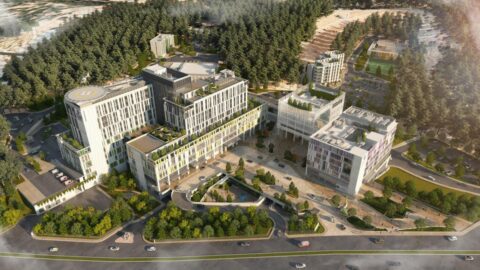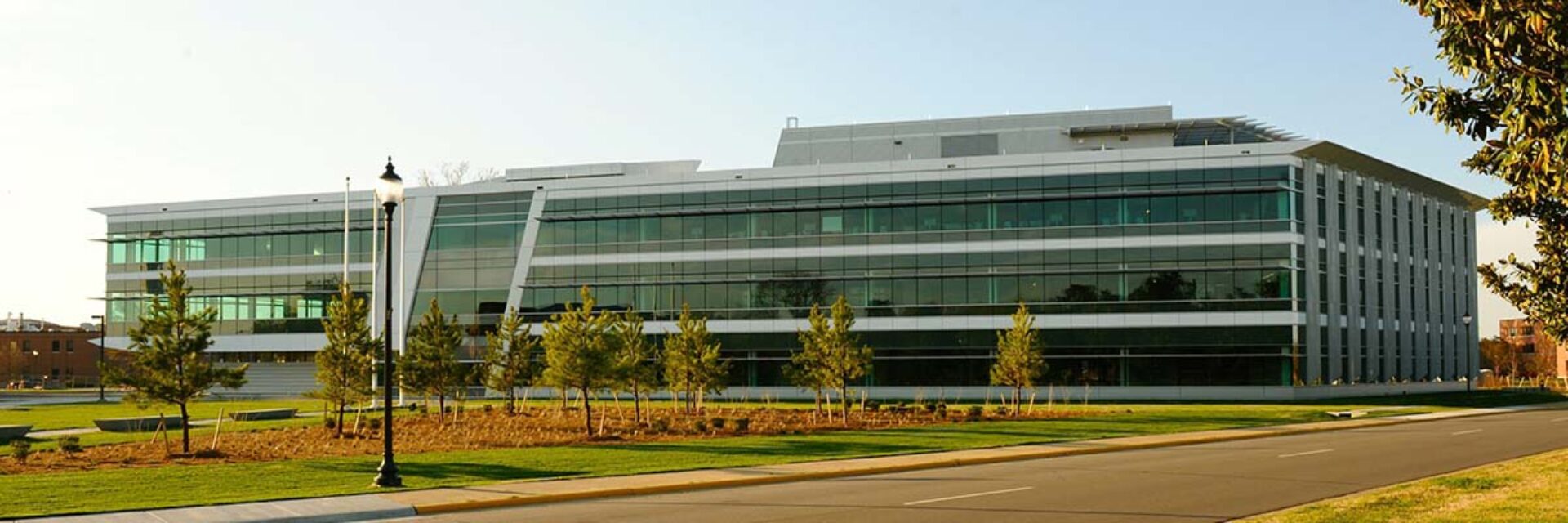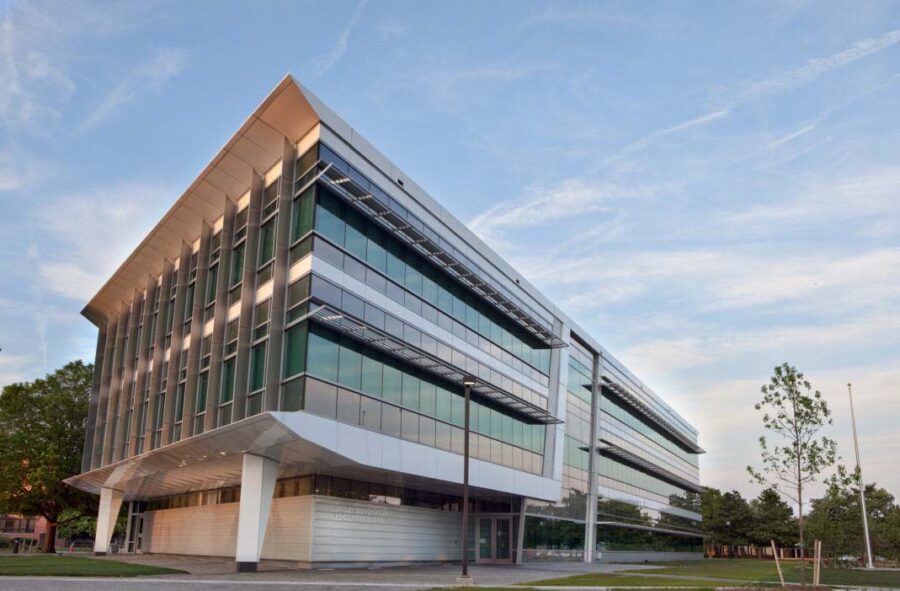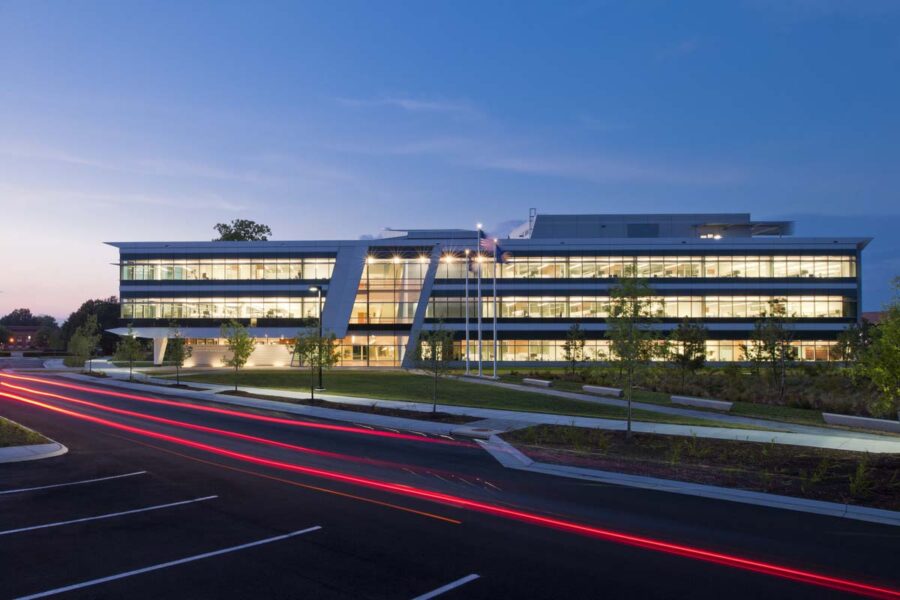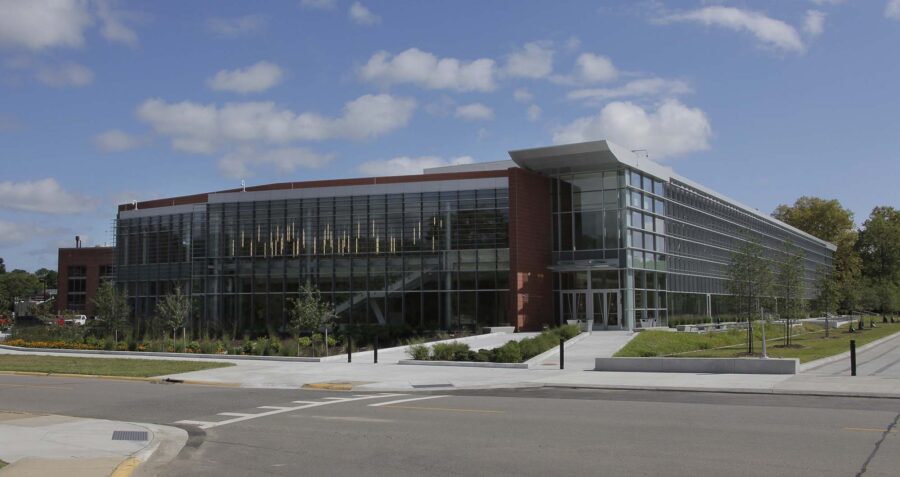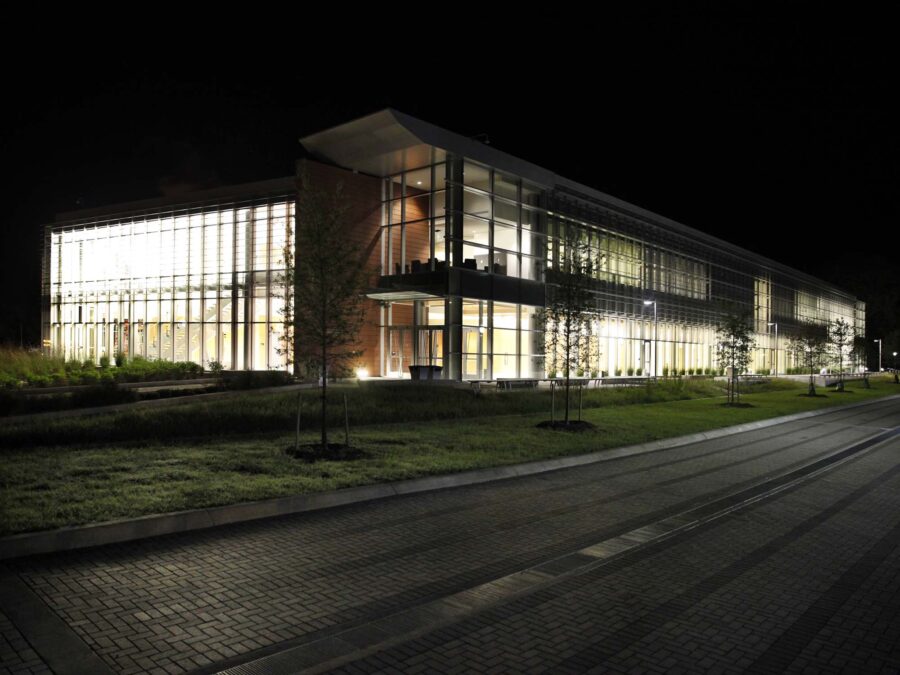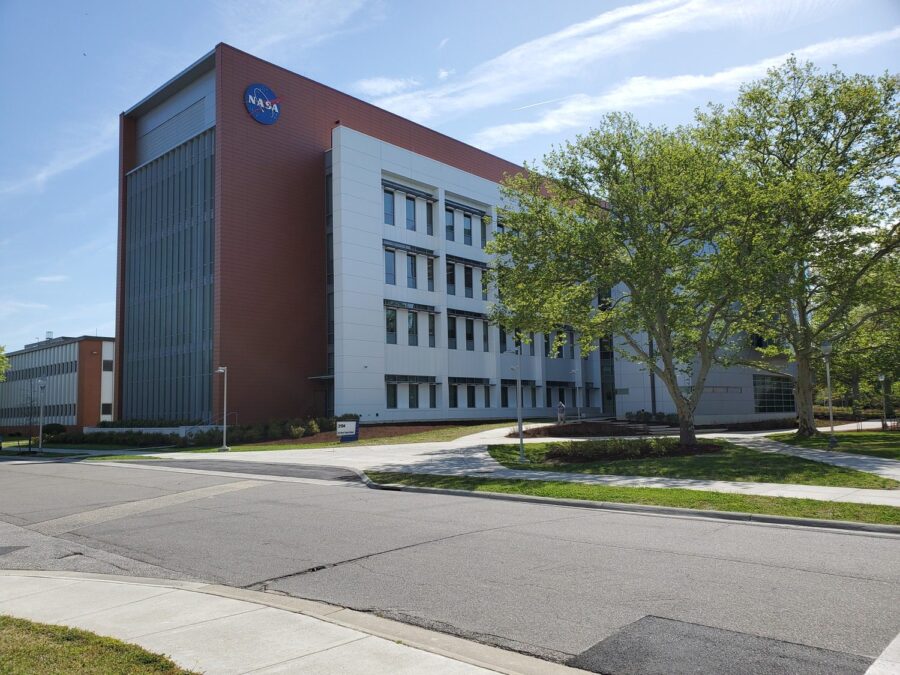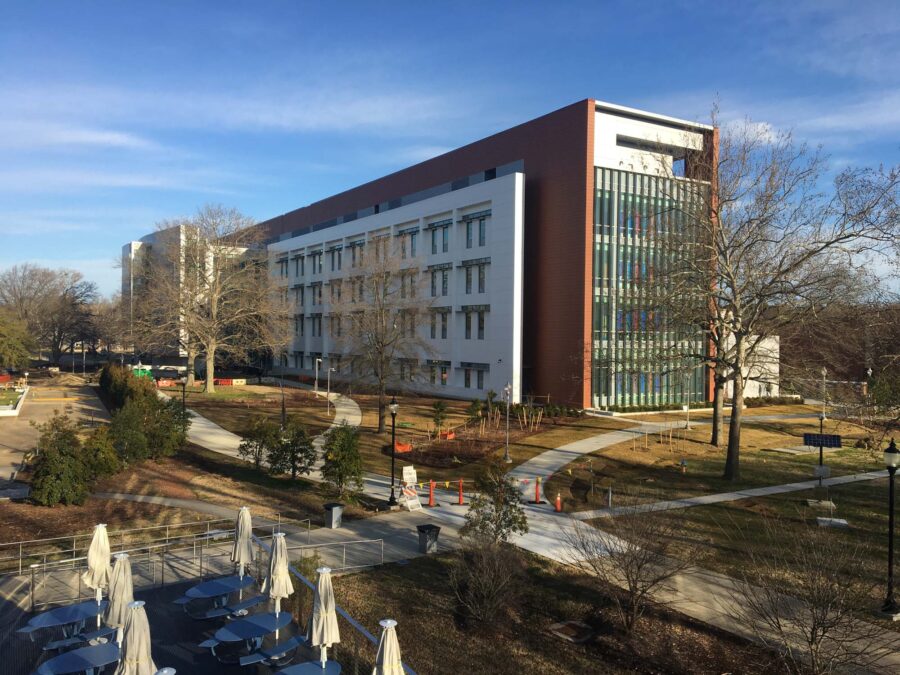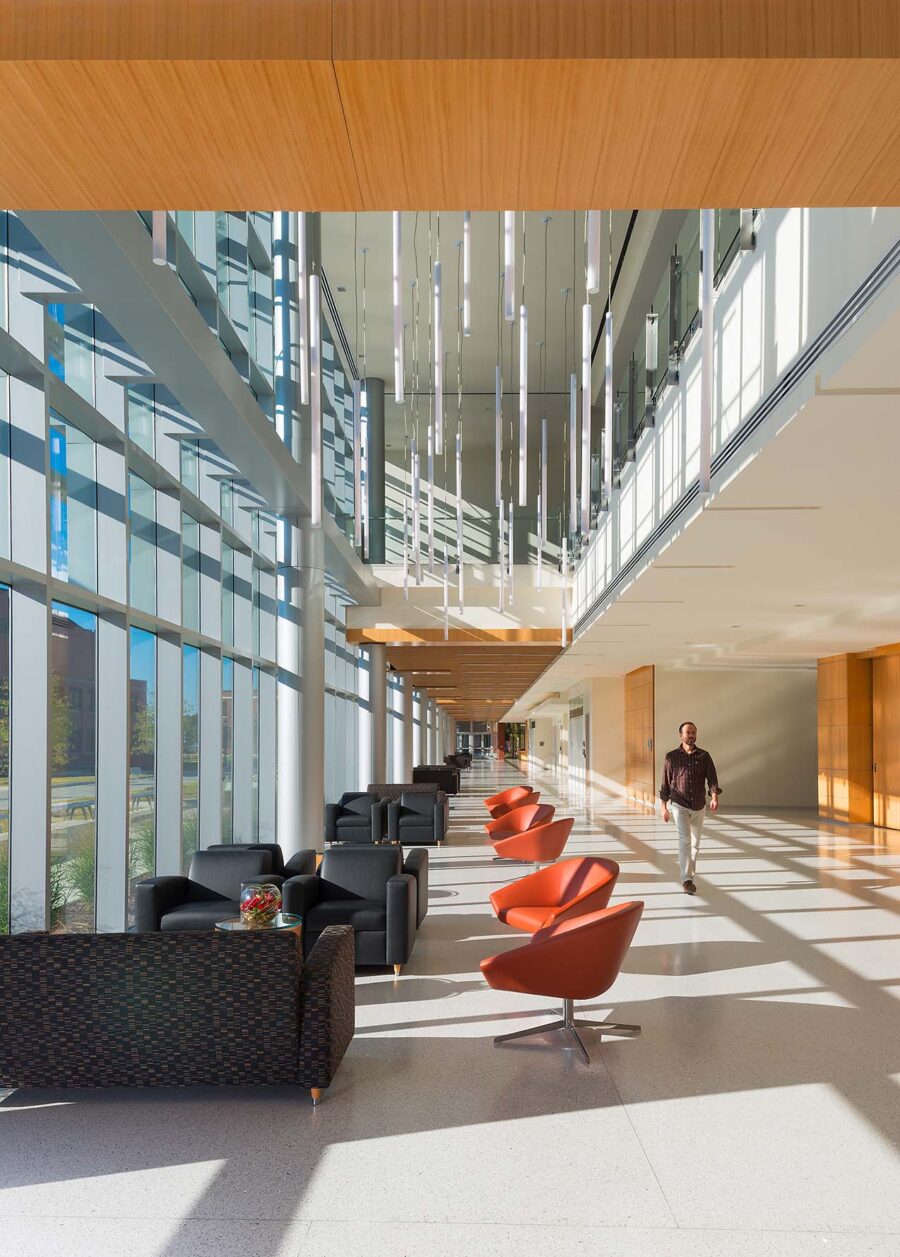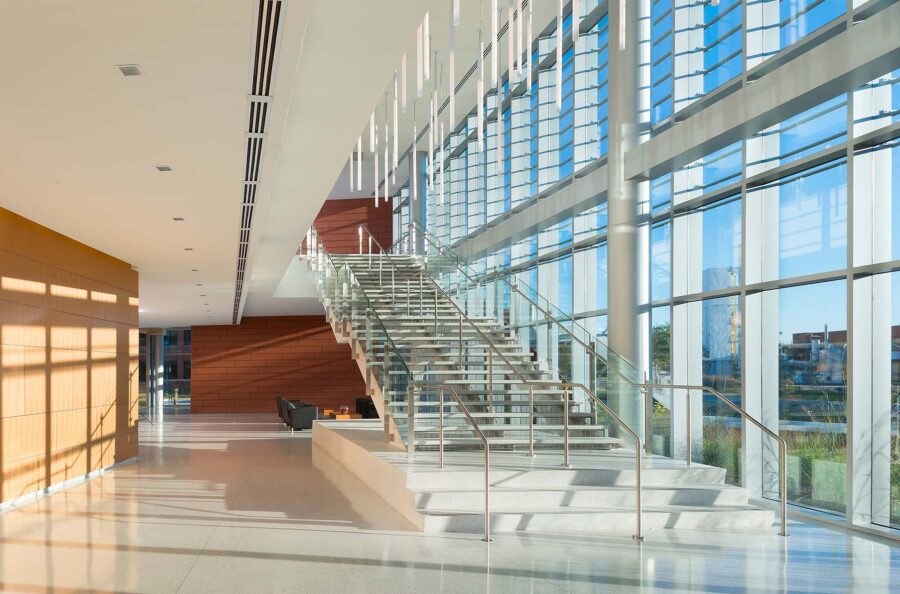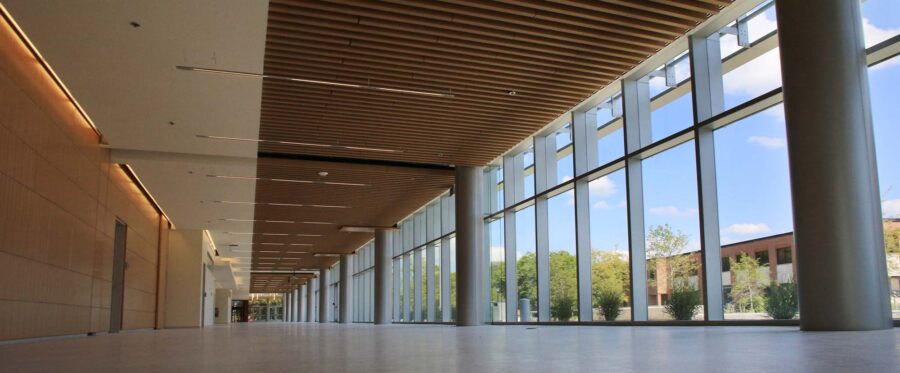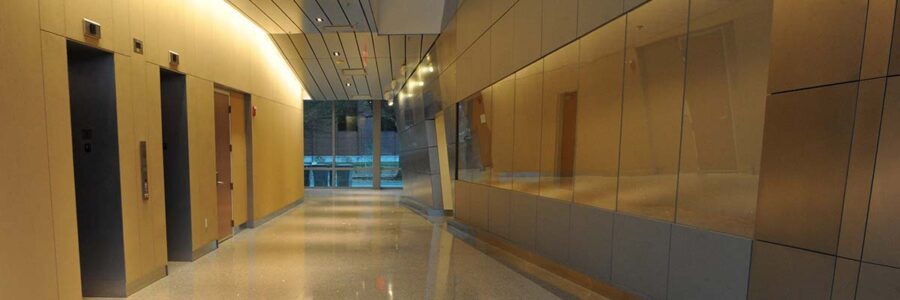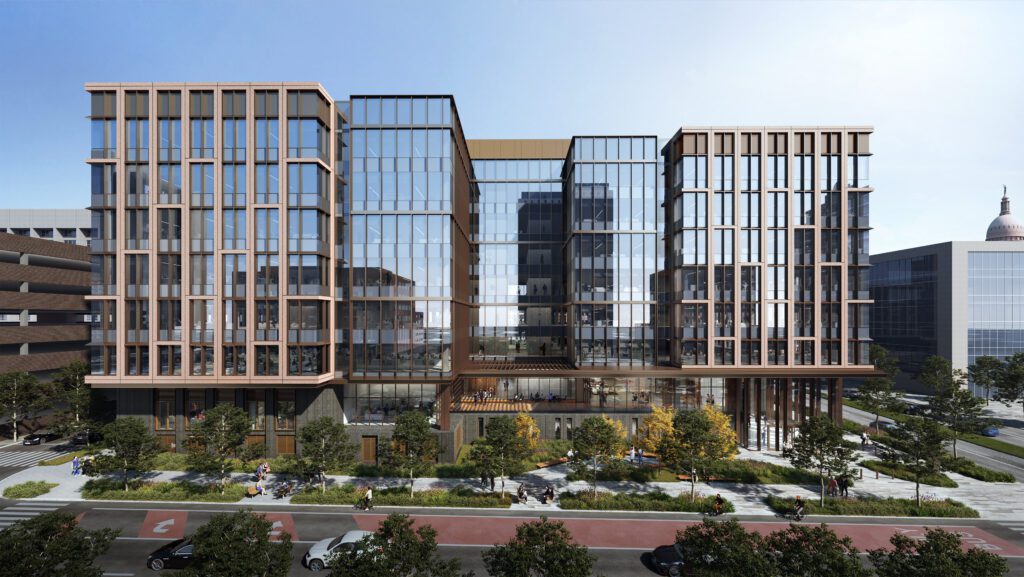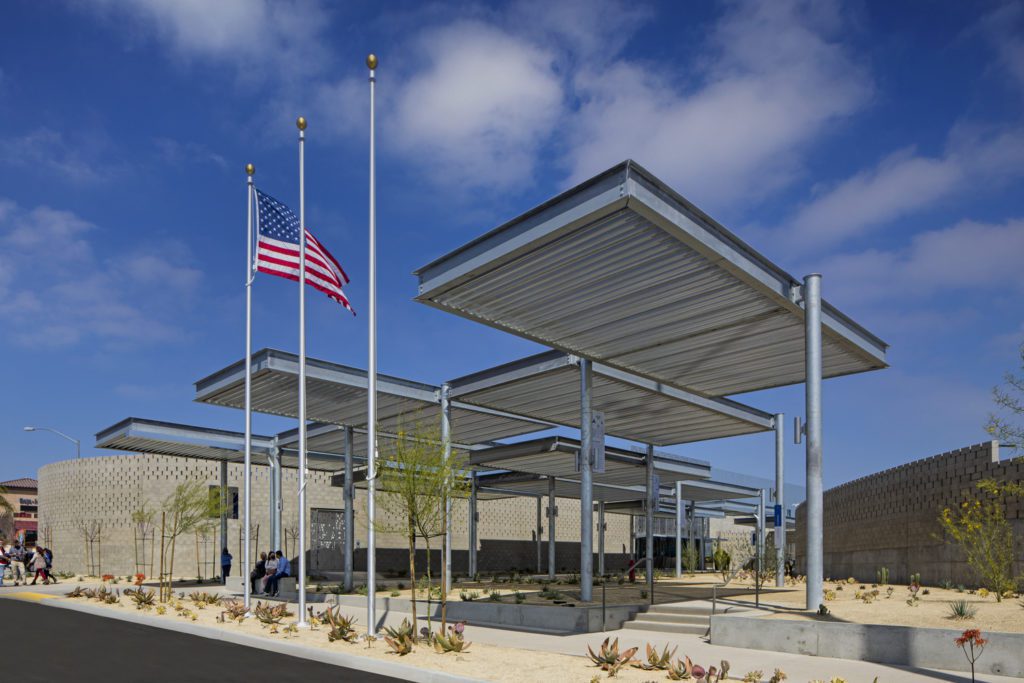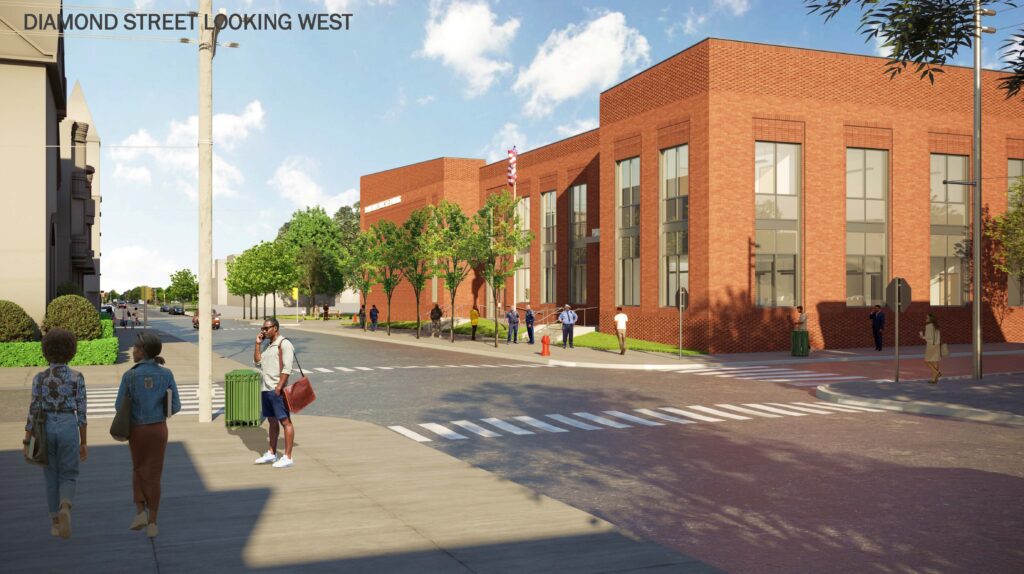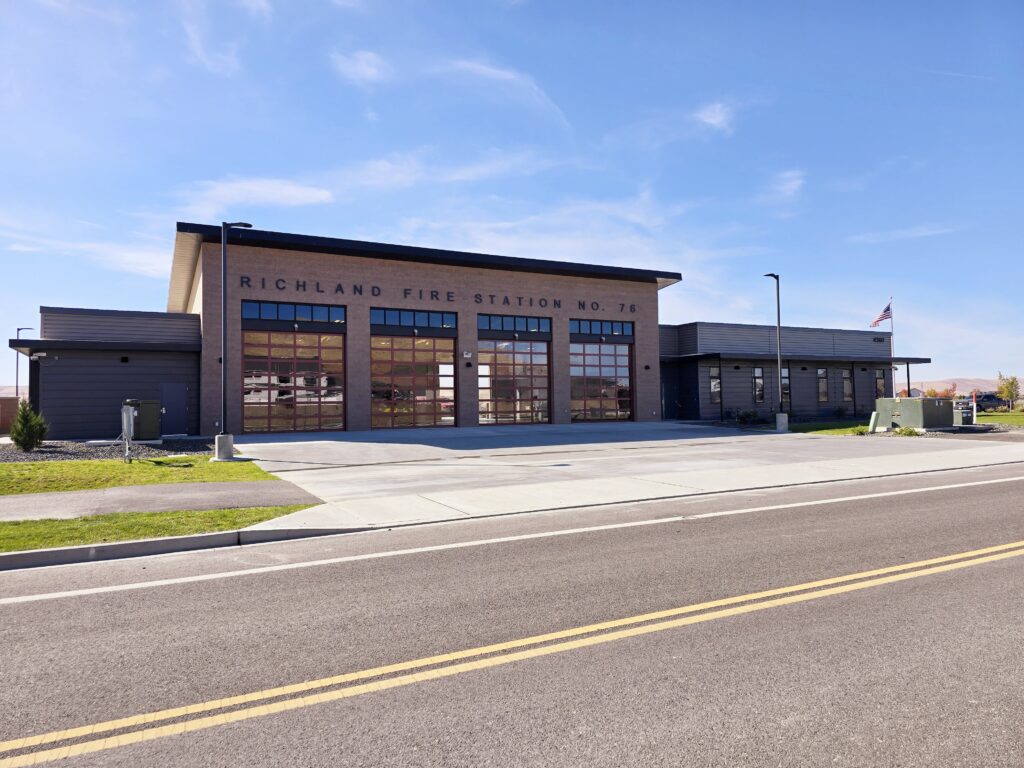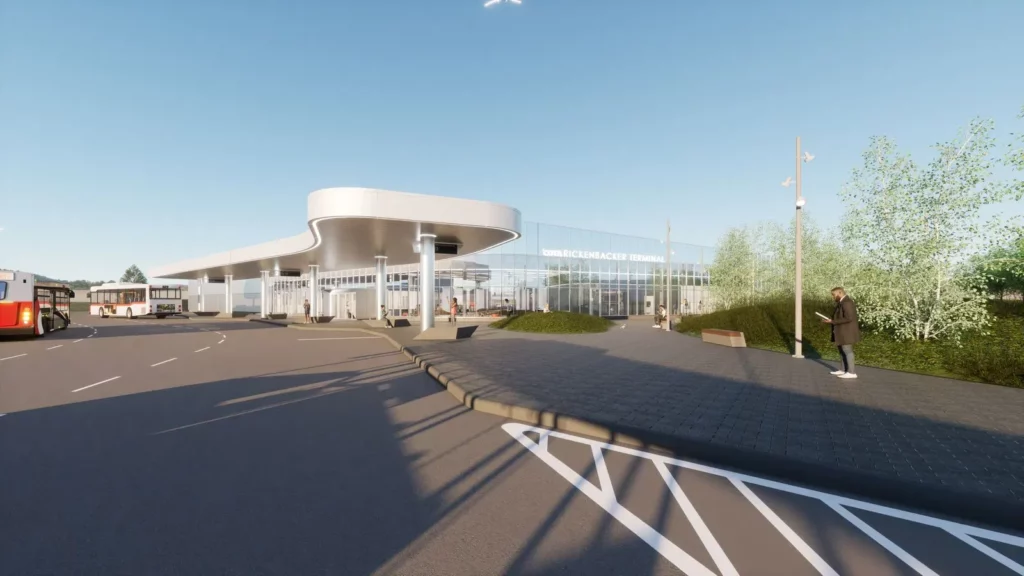NASA’s Revitalization Program is a phased modernization of the Langley Research Center in Virginia. The program will replace outdated research and administrative buildings with new facilities to support NASA’s mission in a campus-like setting. The program began with construction of the design-build Langley Headquarters Building, followed by construction of an Integrated Engineering Service Building and new Measurement Systems Laboratory. Three additional buildings are planned. All buildings feature innovative sustainability initiatives. In particular, the facilities are planned to be at least LEED Silver certified and two have achieved LEED Platinum and Gold.
Hill is providing project and construction management services on the program’s first three of six planned phases. Our services encompass initial program development studies through design management, procurement support, and construction management. This encompasses quality assurance, schedule and cost management, safety management, commissioning, partnering, value engineering, move planning and management, change management, project reporting, ID and security coordination, and contract administration. Hill’s management has resulted in no claims and an on-schedule, on-budget delivery for the U.S. General Services Administration.
Administrative Office Building (AOB1): AOB1 is a 74,000 SF, 3-story Class A office building that houses the Center Director as well as other key staff and departments. Many energy saving design elements such as ground source heating and cooling, a “green roof,” and extensive use of natural daylighting contribute to AOB1’s LEED Platinum certification. Construction operations for AOB1 were fast-tracked from beginning to end. Within two months of receiving the notice to proceed, the design-builder broke ground and started work in the field on foundations and superstructure while continuing to develop the 100% construction documents. Design drawings were developed using BIM software, and Hill helped maintain progress by facilitating collaboration and the exchange of review comments and markups.
As the project transitioned to the (bridging) design phase, Hill conducted design and constructability reviews of the bridging design, design development, 100% construction document, and 100% revised construction document submissions, which generated more than 335 review comments, and managed resolution and timely closure of more than 1,245 comments by other reviewers.
Integrated Engineering Services Building (IESB): The IESB is a 138,000 SF, design-build, 2-story building. This state-of-the-art, campus-wide “services center” features dining, auditorium, main conference center, training rooms, Navigation Center, SRO, Engineering Collaboration, and other spaces for approximately 3,000 NASA employees and up to 300 daily visitors. Like AOB1, this project employed BIM and was designed with modular walls, furniture, power, and IT systems along with advanced clean air conditioning delivery. Designed with energy efficiency as a priority and certified LEED Gold, the IESB uses less than half the energy per square foot than the existing center average.
Measurement Systems Laboratory (MSL): The MSL is a new state-of-the-art, $100 million, 176,000 SF laboratory building featuring laser, chemical, and nanotechnology labs, sensors, clean rooms, flight instruments, and electronics systems. The facility will house multiple clean room classification levels from Class 10,000 to Class 100 as defined by FED-STD-209E and ISO-14644 for Airborne Particulate Cleanliness Classes in clean rooms. The MSL will accommodate approximately 275 permanent staff as well as students and visitors.
“I speak for our entire GSA and NASA Team in expressing our immense satisfaction with the leadership, partnering spirit, dedication, and quality-of-work that you have exhibited this past year.” -Anthony R. Dell’Arciprete, PE, CCM Project Manager, U.S. GSA
 menu
menu
 menu
menu
